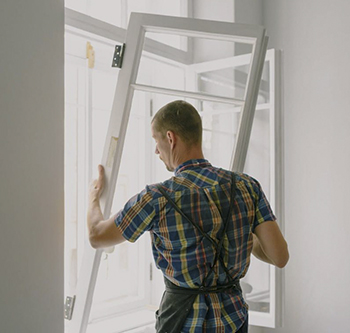Smart concrete
Smart concrete technology offers an alternative method for monitoring the health of reinforced concrete structures. It was developed Dr. Deborah D.L. Chung from State University of New York at Buffalo, U.S. The unique benefit of smart concrete is that it is fortified by carbon fiber, which comprises as much as 0.2% to 0.5% of the volume. This can detect stress or strain in concrete structures before they fail. Smart concrete technology has undergone extensive laboratory testing, but is yet to hit the market.
It works by adding a small quantity of short carbon fiber to concrete with a conventional concrete mixer to modify the electrical resistance of the concrete in response to strain or stress. As a result, the contact between the fiber and cement matrix is impacted when the concrete is deformed or stressed, thereby affecting the volume electrical resistivity of the concrete. The strain is then determined by measuring the degree of electrical resistance. Smart concrete is capable of sensing very small structural flaws and hence finds application in checking the internal condition of structures, particularly after an earthquake.
One factor that may contribute to the global smart concrete market is the widespread use of concrete as a composite material and its inability to withstand tension. This necessitates monitoring for cracks to allow timely repair. Other methods to evaluate cracks are by attaching embedding sensors into structures. Sensors, however, cost more to install. Smart concrete is relatively cheaper.
The growth in the smart buildings market is likely to encourage the quick uptake of smart concrete. This is because in addition to their basic functionality of detecting minor cracks, smart concrete also helps to arrest the progress of cracks, reinforcing them to make them stronger. Further, it takes a lot of force for smart concrete to bend, and it is able to accept more energy before fracture.
Smart concrete can also find application in building highways able to detect the position, weight, and speed of vehicles.
[edit] Related articles on Designing Buildings Wiki.
- Cellular concrete.
- Concrete.
- Concrete in aggressive ground (SD 1).
- Concrete-steel composite structures.
- Concrete repair mortars.
- Concrete superplasticizer.
- Glass reinforced concrete.
- Graphene-reinforced concrete.
- Precast concrete.
- Prestressed concrete.
- Reinforced concrete.
- Self-compacting concrete.
- Tilt up construction.
Featured articles and news
Mixed reactions to apprenticeship and skills reform 2025
A 'welcome shift' for some and a 'backwards step' for others.
Licensing construction in the UK
As the latest report and proposal to licence builders reaches Parliament.
Building Safety Alliance golden thread guidance
Extensive excel checklist of information with guidance document freely accessible.
Fair Payment Code and other payment initiatives
For fair and late payments, need to work together to add value.
Pre-planning delivery programmes and delay penalties
Proposed for housebuilders in government reform: Speeding Up Build Out.
High street health: converting a building for healthcare uses
The benefits of health centres acting as new anchor sites in the high street.
The Remarkable Pinwill Sisters: from ‘lady woodcarvers’ to professionals. Book review.
Skills gap and investment returns on apprenticeships
ECA welcomes new reports from JTL Training and The Electrotechnical Skills Partnership.
Committee report criticises UK retrofit schemes
CIOB responds to UK’s Energy Security and Net Zero Committee report.
Design and construction industry podcasts
Professional development, practice, the pandemic, platforms and podcasts. Have we missed anything?
C20 Society; Buildings at Risk List 2025
10 more buildings published with updates on the past decade of buildings featured.
Boiler Upgrade Scheme and certifications consultation
Summary of government consultation, closing 11 June 2025.
Deputy editor of AT, Tim Fraser, discusses the newly formed society with its current chair, Chris Halligan MCIAT.
Barratt Lo-E passivhaus standard homes planned enmasse
With an initial 728 Lo-E homes across two sites and many more planned for the future.
Government urged to uphold Warm Homes commitment
ECA and industry bodies write to Government concerning its 13.2 billion Warm Homes manifesto commitment.
From project managers to rising stars, sustainability pioneers and more.
Places of Worship in Britain and Ireland, 1929-1990. Book review.























